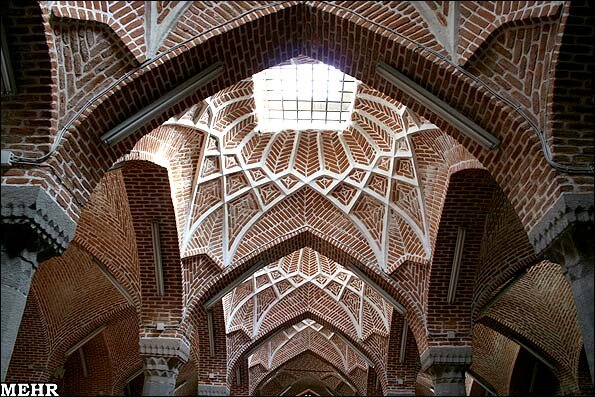Ancient mosque to gain former glory

TEHRAN –The historical Jameh Mosque of Marand, which stands tall in East Azarbaijan province, northwest Iran, is scheduled to undergo rehabilitation works in the near future, the provincial tourism chief has said.
Some urgent restoration works are planned to be commenced on the mosque by the end of the current Iranian calendar year 1399 (March 20), Ahmad Hamzezadeh announced on Thursday.
Restoration of the mosque’s mihrab, which is more time consuming and needs more detailed technical studies, will be continuing during the next [Iranian calendar] year under the supervision of the cultural heritage experts, the official added.
Mihrab is a semicircular niche in the wall of a mosque that points out the qibla, the direction of the Kaaba in Mecca, and hence the direction that Muslims should face when praying.
Jameh Mosque of Marand is estimated to date back to the Ilkhanate times (1256–1335/1353). Hulegu, a grandson of Genghis Khan, was given the task of capturing Iran by the paramount Mongol chieftain Mongke. Hulegu set out in about 1253 with a Mongol army of about 130,000. He founded the Il-Khanid dynasty in 1256, and by 1258 he had captured Baghdad and all of Iran. The Il-Khans consolidated their position in Iran and reunited the region as a political and territorial entity after several centuries of fragmented rule by petty dynasties.
Soaked in history and culture for millennia, Tabriz, which is the capital of East Azarbaijan, embraces several historical and religious sites, including the Jameh Mosque of Tabriz and Arg of Tabriz, and UNESCO-registered Tabriz Historic Bazaar Complex to name a few. The city became the capital of the Mongol Il-Khan Mahmud Gazan (1295–1304) and his successor. Timur (Tamerlane), a Turkic conqueror, took it in 1392. Some decades later the Kara Koyunlu Turkmen made it their capital, it was when the famous Blue Mosque was built in Tabriz.
The city retained its administrative status under the Safavid dynasty until 1548, when Shah Tahmasp I relocated his capital westward to Qazvin. During the next two centuries, Tabriz changed hands several times between Persia and Ottoman Empire. During World War I, the city was temporarily occupied by Turkish and then Soviet troops.
ABU/AFM
Leave a Comment